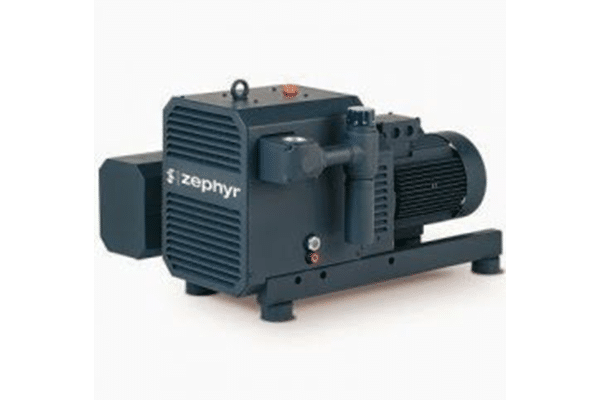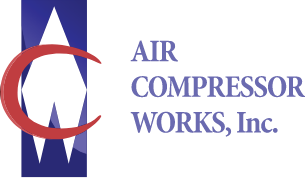Air Compressor Works
Post
Compressor Basics: Claw Compressors and Vacuum Pumps
September 15, 2017

In most compressed air training classes and seminars, the rotary claw pump is usually only mentioned in passing, if at all. In most of the applications where claw compressors and vacuum pumps can be used, rotary vanes or rotary lobes are more common. However, a claw pump can often provide a large amount of energy savings when sized correctly.
We decided that instead of just lumping them in a post under “other,” we’d highlight them in a separate post.
Here is how claw compressors and vacuum pumps work. It is a rotary pump with two claw-shaped rotors. They turn in opposite directions in the housing. They don’t touch but the clearance is very, very small. As the claw moves over the inlet, air is sucked into the compression chamber. As the rotors revolve, it reduces the volume of the trapped air, which causes the pressure to rise. For vacuum, just switch the inlet and the outlet (and there are some other minor changes made).
The claw pump is another “oil-free” technology. There is no oil in the compression chamber, only in the gearbox.
Usually claw pumps are used as vacuum pumps or as blowers. What I mean by the term “blower” is a compressor that puts out a low pressure at a high volume. Of course low pressure and high volume are relative terms. What we’re comparing it to in this case are the technologies we reviewed before – piston, screw, and scroll. For the same amount of energy a blower will give you a lot more volume, but at a considerably lower pressure. Piston, screw, and scroll compressors are mostly used for pressures above 80 psi. When used as a pressure pump, the claw is usually for pressures below 30 psi. There are now two-stage versions that can be used up to 100 psi. Every technology has their “sweet spot” where they perform well compared to the competition.
A lot of customers don’t know that the claw pumps exist, but they’re great for certain situations. Rotary vane and rotary lobe tend to dominate the market for these low pressure applications, because those pumps have been around for a long time and the customers are familiar with the technology.
However, if you’re in the market for a vane or lobe pump, you may want to consider a claw pump, because there may be some benefits.
Here are the benefits of a claw:
1. In most cases, you use less horsepower to provide the same amount of air or vacuum that you would from the claw’s major competitors – the vane and lobe pumps.
2. The maintenance is extremely low.
3. 100% duty cycle.
A good example of this is the Rietschle VLR-301 vacuum pump. At 7.5hp it can produce the same amount of volume that Rietschle’s 10 hp vane pump can do (and the 10hp vane pumps of the competitors). Additionally with the vane pump, you’re replacing about a gallon of oil at least twice a year – sometimes as much as four times per year. With the VLR-301, you replace the gear oil every 20,000 hours of running time and it’s only about a quart.
So that sounds great, what’s the catch?
The drawbacks are:
1. Higher initial cost. In the example above the 7.5hp VLR-301 costs a couple of thousand more than Rietschle’s 10hp vane pump. However, that’s made up later in energy savings and maintenance costs. If you look long term, or even medium term, this isn’t a drawback, because over the course of a few years, your overall cost is less.
2. In the instance above, the VLR-301 cannot pull a full vacuum. It can pull a lot, but it can’t pull the vacuum that a vane pump can. If you needed a full 29 inHg, then you’d have to go with the vane pump. For a more general drawback of claw technology as a whole, it’s designed around its sweet spot of power, flow, and pressure/vacuum. When you hit that sweet spot, it’s usually the best option. If you’re too far outside that sweet spot, it may not be able to do what’s asked of it. It needs to be sized correctly by a professional.
So in what situations should you look for a claw pump? Here’s a list of good applications for it:
Central vacuum systems
Chemical industry – gas compression
Aeration
Drying
Dust extraction
Gas compression
Soil remediation
Drying systems
Dust extraction systems
Industrial furnaces
Medical vacuum
Packaging
Pneumatic conveying
Printing industry
Woodworking industry
Clamping
Dust extraction
Holding
Claw pumps seem to be exceptionally good fits for the printing industry, soil remediation, medical vacuum, bulk material handling, CNC machines and vacuum hold-down.
Again with any technology, it has a sweet-spot where it performs the best. Claw sizing is more advanced than your typical compressor installation. I highly advise you contact the experts before you buy one. Also, if you ask for a claw pump, and the distributor doesn’t ask a bunch of questions on why you need that pump and what it’s used for – you should probably get a quote from somewhere else. That company just wants to sell you equipment with no regard on whether it’s right for you or not. They just want to make a quick buck and run – they’re not looking to be your compressed air partner.
Contact Us
Contact Us
Palm beach:
1956 W 9th St
Riviera Beach, FL 33404
Monday – Friday 7:30 AM - 4:30 PM
Map and Directions
Miami:
7292 NW 25th St
Doral, FL 33122
Monday – Friday 7:30 AM - 4:30 PM
Map and Directions
Phone Number:
Areas We Serve
- Miami
- Fort Lauderdale
- Hollywood
- Boca Raton
- Stuart
- Vero Beach
- Delray Beach
- West Palm Beach
- Homestead
- Key West
- Fort Pierce






